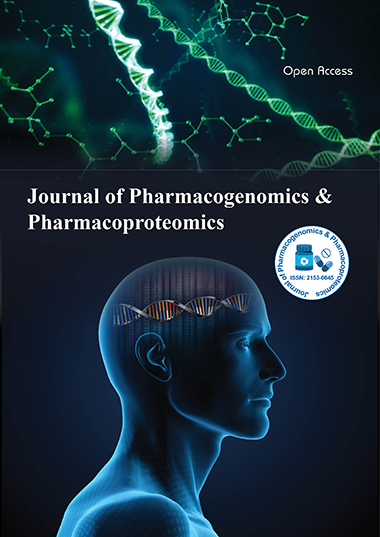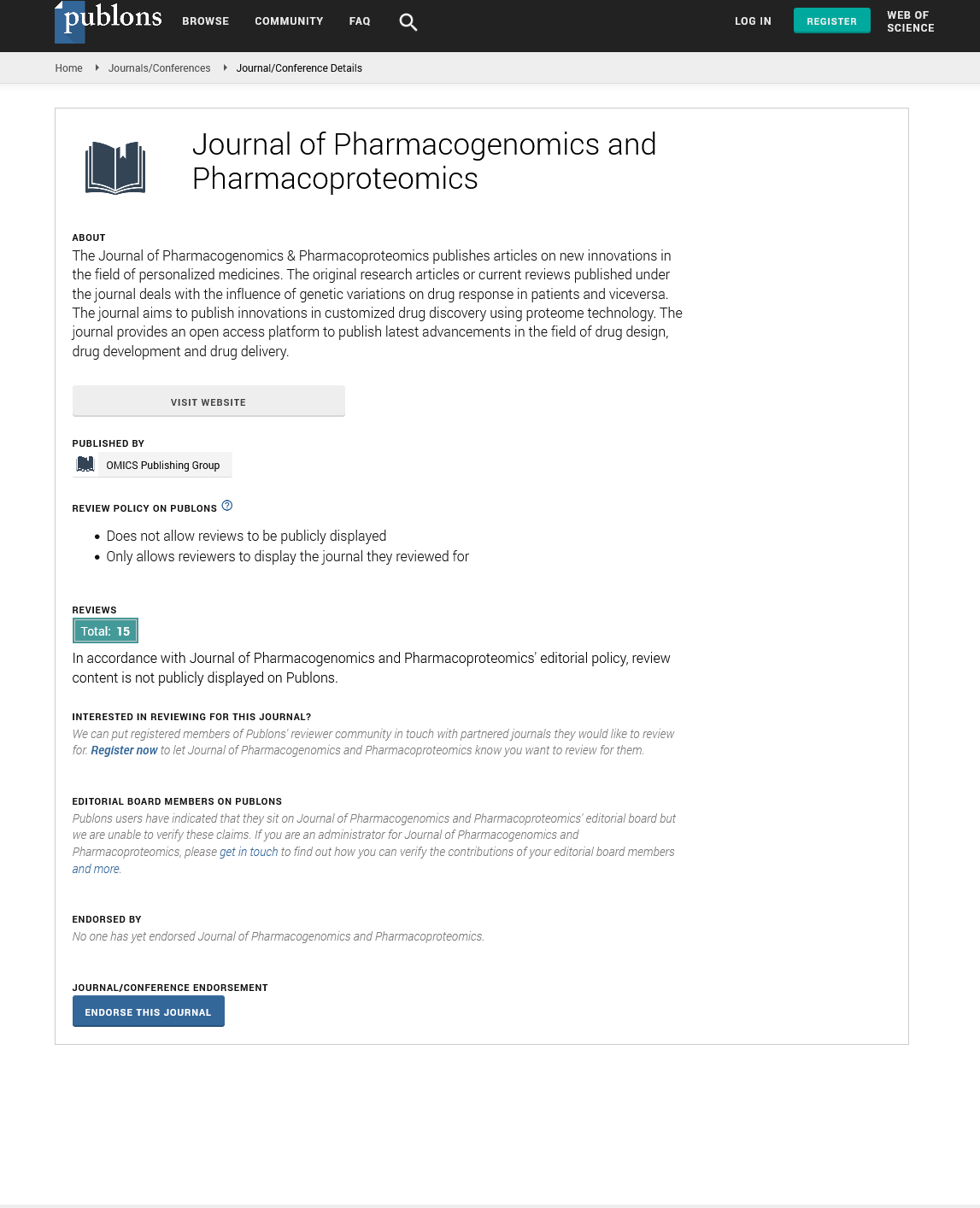Indexed In
- Open J Gate
- Genamics JournalSeek
- Academic Keys
- JournalTOCs
- ResearchBible
- Electronic Journals Library
- RefSeek
- Hamdard University
- EBSCO A-Z
- OCLC- WorldCat
- Proquest Summons
- SWB online catalog
- Virtual Library of Biology (vifabio)
- Publons
- MIAR
- Euro Pub
- Google Scholar
Useful Links
Share This Page
Journal Flyer

Open Access Journals
- Agri and Aquaculture
- Biochemistry
- Bioinformatics & Systems Biology
- Business & Management
- Chemistry
- Clinical Sciences
- Engineering
- Food & Nutrition
- General Science
- Genetics & Molecular Biology
- Immunology & Microbiology
- Medical Sciences
- Neuroscience & Psychology
- Nursing & Health Care
- Pharmaceutical Sciences
Perspective - (2022) Volume 13, Issue 3
Pharmacogenomics and Drug Responses in Children
Stephen Mark*Received: 02-May-2022, Manuscript No. JPP-22-16784; Editor assigned: 06-May-2022, Pre QC No. JPP-22-16784(PQ); Reviewed: 20-May-2022, QC No. JPP-22-16784; Revised: 27-May-2022, Manuscript No. JPP-22-16784(R); Published: 06-Jun-2022, DOI: 10.35248/2153-0645.22.13.011
Description
Adverse medication responses are a common and serious consequence of pediatric pharmacological therapy. Over the last decade, it has become clear that genetically determined differences in drug disposition and responsiveness are key drivers of adverse drug therapy outcomes in children. While this research has been challenging to execute in the previous decade, advances in technology and ethics have dramatically aided investigators' abilities to conduct pharmacogenomic investigations in children. In the case of codeine usage by mothers and children, for example, some of this study has already resulted in changes in public policy and clinical practice. It's likely that the use of pharmacogenomics to improve drug safety will first be realized among children with high rates of drug use, such as children with cancer, but it's also likely that this research will be extended to other children with high rates of drug use, as well as providing insights into the mechanisms and pathophysiology of adverse drug reactions in children.
The growing interest in personalized medicine has brought attention to the role of genetic variation in the pathophysiology and outcome of human disease. The impact of genetics on health in children has long been recognized. For example, the impact of congenital diseases such as Down syndrome was well understood in the eighteenth century, though the precise genetic basis of the disease was not established until 1959. Numerous additional genetically determined diseases, such as Cystic Fibrosis and Duchenne Muscular Dystrophy, have long been recognized by doctors as having a significant impact on children's health, wellbeing, and life expectancy. The discovery of sulfanilamide's antibacterial properties in 1937 started the Therapeutic Revolution. Genetic variables' ability to impact therapy results has previously been identified. Sir Archibald Garrod is known as the "Father of Medical Genetics" because he was the first to discover the importance of the notion that persons are biochemically distinct individuals. At the turn of the century, he also observed that, in addition to influencing critical metabolic pathways, heredity was likely to influence variability in drug response in patients.
The genetics influenced drug action and clearance would be an important part of understanding how to address variability in drug response, both desired and unwanted, in children, and pharmacogenomics has been a relative latecomer to the forefront of pediatric research. Indeed, the recognition that ontogeny is an important part in the pathophysiology of many childhood illnesses has been important for research involving children in other areas. Developmentally-induced changes in drug disposition related to maturation of pathways involved in drug activation and clearance have long been recognized as an important determinant of drug response in children, with the more recent recognition that the ontogeny of drug receptors and transporters may be key elements in determining drug response in children. For example, in the foetus, CYP3A7 is a major driver of oxidative drug metabolism, while CYP3A4 activity is little; following birth, CYP3A7 activity rapidly falls and CYP3A4 activity steadily increases. Renal drug excretion in the foetus is significantly lower than in older children; at birth, term newborns have a third of the glomerular filtration capacity of children a year old on a surface-area corrected basis. Failure to recognize this has resulted in tragedies, such as the Gray Baby Syndrome linked to neonatal chloramphenicol medication. For decades, it has been recognized that developmental heterogeneity in medication clearance and response has had a significant impact on drug safety in children. As a result, it's not unexpected that most of pediatric pharmacology research has concentrated on understanding the ontogeny of critical drivers of drug activation throughout the last few decades. Furthermore, while most of the genetic disorders historically most relevant to child health were either chromosomal polysomy (Down Syndrome) or disorders inherited through classical Mendelian or X-linked inheritance (Cystic Fibrosis or Duchenne Muscular Dystrophy), many pharmaco-gentically determined variations are due to far more complex mechanisms, frequently involving the interaction of multiple genes and gene products.
Citation: Mark S (2022) Pharmacogenomics and Drug Responses in Children. J Pharmacogenom Pharmacoproteomics. 13:011.
Copyright: © 2022 Mark S. This is an open-access article distributed under the terms of the Creative Commons Attribution License, which permits unrestricted use, distribution, and reproduction in any medium, provided the original author and source are credited.

